 |
|


All electronic donations will be
processed by PayPal
 
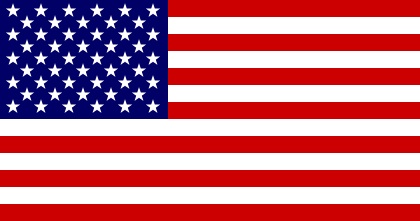 Nantucket/LV-112 Proudly made in USA
Attention
lighthouse lovers!
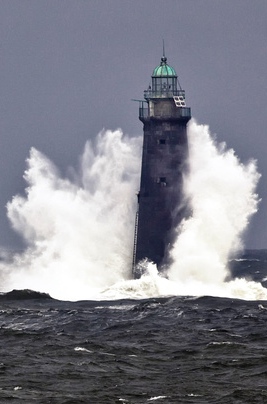
If you love lighthouses and want to learn about these guiding lights and navigational aids all over the world, then
The Lighthouse Directory is the website for you. It provides an astounding amount of information, linking to more than 17,200 of the world's lighthouses. Russ Rowlett, Adjunct Professor of Mathematics at the University of North Carolina at Chapel Hill, compiled the directory with the assistance of hundreds of lighthouse fans around the world who have enriched this site with their own information and suggestions. For a long time, Rowlett tried to maintain a list of lighthouses from his many friends and contacts, but it had grown too long (and too out of date) to display on the comprehensive site. Rowlett offers special thanks to
Michel Forand for his suggestions and editing, touching essentially every page of the directory, and Jeremy D'Entremont, Ted Sarah and Klaus Huelse, each contributing in vital ways.
The Maine
Lighthouse Museum
Another unique educational resource for U.S. Lighthouse history, Lifesaving and Lightship Services is the Maine Lighthouse Museum (MLM), located in Rockland, Maine, the heart of the Midcoast. Last October, the U.S. Lightship Museum presented a PowerPoint presentation at the MLM about U.S. lightships and
Nantucket/LV-112.
The mission of the Maine Lighthouse Museum is to educate the public regarding the longstanding traditions, heroism and progress of America's Lighthouse and Lifesaving Services and the U.S. Coast Guard through the conservation and interpretation of the nation's most significant collection of lighthouse and lifesaving artifacts. From sparkling lenses to heartwarming stories of the keepers and their families, the Maine Lighthouse Museum is truly America's lighthouse museum. For more information, log on to the
Maine Lighthouse Museum or call 207.594.3301.
American Express
Amex Industrial Services, Inc.
Association of Public Safety Communications Officials - Atlantic Chapter
BAE Systems
Bluefin Robotics
Boston Forge & Welding Corp.
Boston Harbor
Shipyard & Marina
The Boston Foundation
ThreeBees Fund
Burnham Associates, Inc.
Burnham Marine
California Public Safety Radio Association
Cameron International Corporation
Charitable Adult Rides and Services, Inc. C/J Towing & Recovery Claflin & Son Nautical Antiques Crandall Dry Dock Engineers
Capt. Robertson P. Dinsmore Fund
Donahue, Tucker & Ciandella, PLLC
East Boston Foundation
Eastern Bank Charitable
Foundation
Egan Maritime Institute,
Nantucket Shipwreck &
Lifesaving Museum
Fitzgerald Shipyard
Foss Maritime
Friends of the
Boston Harbor Islands
H&H Propeller, Inc.
J. Hewitt Marine
Electrical Services
Kelly Automotive Group
H.F. Lenfest Fund
The Lightship Group, LLC
McAllister Towing &
Transportation Co.
Joe and Pepette Mongrain
Fund
National Trust for
Historic Preservation
New England
Lighthouse Lovers
New London Maritime Society and Custom House Maritime Museum The Sail Loft, LLC, Nantucket Sherwin-Williams
Industrial Marine Coatings Division
T & M Services
Town of Oyster Bay,
Long Island, NY
U.S. Coast Guard Lightship Sailors Association
West Marine
U.S. Lighthouse Society
Westerbeke Company
USLM Members
Verizon Foundation
Zuni Maritime Foundation USS Zuni / USCG Tamaroa
Individual Donors


USLM is a member
of the following organizations 

The flag of the United States Lighthouse Service
Teach children about lightships with the book
Lightship
Editorial From School
Library Journal
Kindergarten-Grade 2: Lightships were anchored where lighthouses could not be built. They protected our ocean harbors as well as points along the Great Lakes. The last one (
Nantucket/LV-613
) was decommissioned in 1983, so this fascinating picture book is a piece of nautical history. Brian Floca's watercolor drawings depict daily life aboard one of these vessels, cooking, sleeping, working, all the while rolling with the rhythm of the waves. Many hazards were involved. Big ships came too close, anchors lost their mooring, and weather caused many problems. But when the fog rolled in, the lightship sprang into action. Lights flashed and horns sounded, allowing ship traffic to make it "through fog and night, past rocks and shoals, past reefs and wrecks, past danger." The drawings are very detailed. Some pages are collages of small scenes. Many are full spreads. The sailors' facial expressions are amusing to watch, and the resident cat appears on almost every page. The front and back endpapers show a cutaway view of one of the vessels. This fascinating, little-known slice of history should prove interesting to every child who loves big boats.
-- Ieva Bates, Ann Arbor District Library, MI
(review originally published by Reed Business Information, Inc.)
The book
Lightship
, by Brian Floca, can be purchased on
Amazon.com
. For more information about lightships, click on Brian Floca's
blog
.
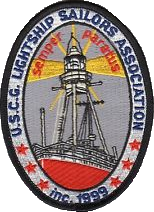 |
|
For more information about the U.S. Coast Guard Lightship Sailors Association and the U.S. Lightship Service, click on logo
|
Lead, Kindly Light
By John Henry Newman
(1801-1890)
"Lead, Kindly Light, amidst th'encircling gloom,
Lead Thou me on!
The night is dark, and I am far from home,
Lead Thou me on!
Keep Thou my feet; I do not ask to see
The distant scene; one step enough for me.
I was not ever thus, nor prayed that Thou
Shouldst lead me on;
I loved to choose and see my path; but now
Lead Thou me on!
I loved the garish day, and, spite of fears,
Pride ruled my will. Remember not past years!
So long Thy power hath blest me, sure it still
Will lead me on.
O'er moor and fen, o'er crag and torrent, till
The night is gone,
And with the morn those angel faces smile,
Which I have loved long since, and lost awhile!
Meantime, along the narrow rugged path,
Thyself hast trod,
Lead, Saviour, lead me home in childlike faith,
Home to my God.
To rest forever after earthly strife
In the calm light of everlasting life."
Note: "Lead Kindly Light" was a poem originally written by John Henry Newman (1801-1890), who was 33 years old when he found himself on a boat from the Sicilian city of Palermo to Marseille, France. Newman, who was recovering after being dangerously ill with a fever, was on the boat to return to his native England when he penned the lyrics to "Lead, Kindly Light." The context that Newman was recovering from a frightening illness in the middle of the sea gives insight to the lyrics.
Photo above: Pigeon Point Lighthouse in California, by Darvin Atkeson
Poem posted on
LV-112 while in service on Nantucket Shoals Lightship Station
"When a sailor gets to thinking
He is one of the best
Let him ship out on a lightship
And take the acid test.
And if he feels like bragging
I don't think that all of his tales
Will be of deep sea sailing
But of the ship that never
Poem provided by Peter Brunk,
USCG-Ret., Commanding Officer,
Nantucket/LV-112, 1970-71, who serves on the USLM Board of Directors
|
This comprehensive New England shipwreck website is a helpful resource for SCUBA divers, maritime history researchers and enthusiasts. The site includes many photographs, charts, reference documents and history about many shipwrecks located in New England waters. For more information,
The Sinking of the U-853
by Capt. William Palmer
When the German enemy submarine
U-853 entered U.S. waters off Portland, Maine in 1945, it torpedoed and sank the
USS Eagle-56.
Nantucket/LV-112, converted to an examination vessel,
USS Nantucket (1942-45) during WWII, helped save the crew of the
USS Eagle-56.
This is a book about the
U-853
story, researched and written by
Capt. Bill Palmer
, a long-time shipwreck researcher, diver and preservationist.
Description of book: "Out in the cold Atlantic Ocean off the coast of Rhode Island, lies the remains of what was once a feared and mighty hunter. It's not a fish or shark, for that matter it is not even a marine creature. It's what men feared the most when they went to sea aboard their vessel back during the World War II years. It's a German submarine called a U-Boat. The
U-853 was the last German submarine sunk in World War II. She was sunk with all hands just minutes before World War II ended. The once mighty hunter feared by all who put to sea, now lies in 130 feet of water off the coast of Block Island, Rhode Island, her grave marked only by a circle on the nautical charts, DANGER Unexploded Depth Charges, May 1945."
Capt. Palmer has been running a charter boat for wreck-diving, shark-fishing and shark-cage-diving off the coast of Rhode Island and Connecticut for 40 years.
German U-boat attack off Portland, Maine, during WWII, involving
LV-112 (USS Nantucket)
This book is the story of a small U.S. sub-chaser, the
Eagle 56, caught in the crosshairs of a German U-boat, the
U-853, whose brazen commander doomed his own crew in a desperate, last-ditch attempt to record final kills before his country's imminent defeat a few weeks later in May. And it is the account of how one man, Paul M. Lawton, embarked on an unrelenting quest for the truth and changed naval history.
For more information, log onto: "
Due to Enemy Action
"
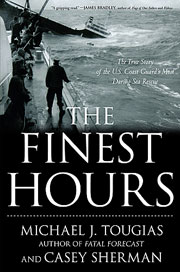
"In February of 1952, one of the worst storms to ever hit the East Coast struck New England, damaging an oil tanker off the coast of Cape Cod and literally ripping it in half. On a small lifeboat faced with frigid temperatures and 70-foot high waves, four members of the U.S. Coast Guard (Bernie Webber and three other crewmen) set out to rescue the more than 30 stranded sailors trapped aboard the rapidly sinking vessel. 'The Finest Hours' is the story of their heroic mission, which is still considered the greatest small boat rescue in Coast Guard history."
(Michelle McCue, 9/9/14)
Bernie Webber (later served on
Nantucket/LV-112, 1958-60) and the three other crewmen were awarded the coveted USCG Gold Lifesaving Medal for their heroism in what is considered by maritime historians to be "the greatest small boat rescue in Coast Guard history." Mr. Webber, who was a member of the USCG Lightship Sailors Association, was extremely helpful in assisting the
USLM-Nantucket/LV-112 compile research information and historic documents about
LV-112. He was a pleasure and honor to work with. Bernie passed away in January 2009. He was considered "A Real American Hero" and is dearly missed.
|
|
|
The full length movie "The Finest Hours' is available on DVD.
|
To learn more about
lighthouse news, click on
Lighthouse Digest
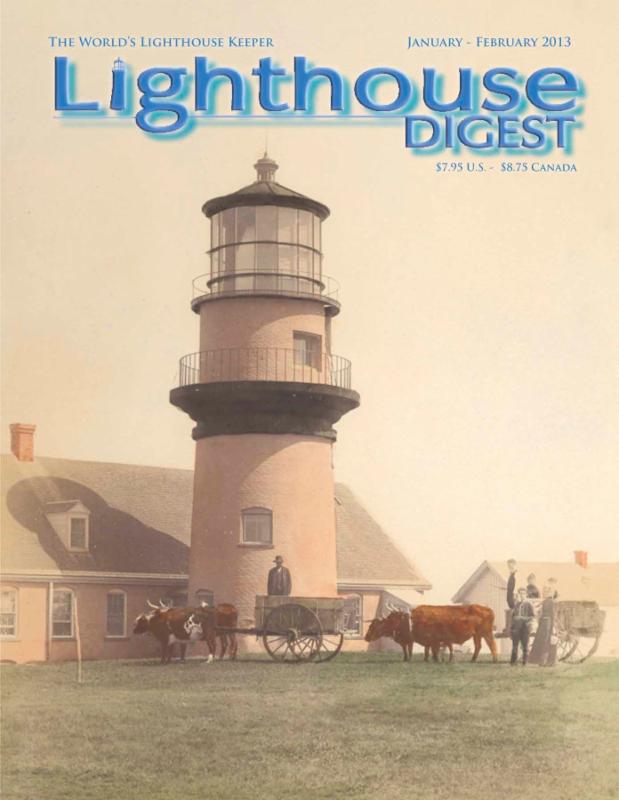
Explore the oceans in depth and Woods Hole Oceanographic Institution with
Oceanus magazine

Oceanus
explores the oceans in depth, highlighting the research and researchers at Woods Hole Oceanographic Institution in news, features and interviews written by magazine staff, with full-color photographs and illustrations. Each issue covers a wide spectrum of oceanography, spanning coastal research, marine life, deep-ocean exploration and the ocean's role in climate, as well as ocean technology and policy. To learn more, click on magazine cover above.
Lightships, Lighthouses & Lifeboat Stations:
A Memoir and History
Lightships, Lighthouses & Lifeboat Stations is part history book, part memoir, written by Bernie Webber, recipient of the Coast Guard's highest award, the Gold Life-saving Medal, and hero of the Disney movie The Finest Hours. While the public will recognize Webber's name from the movie and the bestselling book by the same name, few people know that during his lengthy Coast Guard career he served on lightships (ships anchored in dangerous areas to warn other vessels of hazards) in addition to lifeboat stations (small boat rescue stations) and lighthouses. Webber poses the following question: "How did the lightship men cope with the isolation, constant loneliness, boredom, fear, or just sheer terror? All were part of life on board a lightship. Rough seas tossed the ship about, rearing up and down on the anchor chain. This was a world of isolation, noise from operating machinery, and blasts from the powerful foghorn that went on for hours, sometimes days, at a time." Webber answers that question in this book, drawing on a combination of personal experience and meticulous historical research. Discussions of men going mad, lightships being run down by larger ships, anchor chains breaking, and lightships cast upon shoals are offset by humorous stories and the author's reflections on his best days at sea. Fourteen historic photos are included, as well as a foreword by Michael Tougias.(reprinted from Amazon).
Help support the restoration of LV-112 by donating your old car and receive a tax deduction
How it works
We have teamed with Charitable Auto Resources, Inc. (CARS), to accept vehicle donations across the United States. Once
you contact our customer service representative about making a donation, everything will be taken care of, including a receipt for your tax records. Sale proceeds will be donated to the USLM in your name. Donating your vehicle to the U.S. Lightship Museum is as easy as calling our representative toll-free at 855-500-7433.
For more information,
click here
.
The Lightships
of Cape Cod

Authored by Frederic L. Thompson, 1996, 2nd printing, 112 pages, soft wrap. Signed by the author. Illustrated with over 93 beautifully detailed photographs. Much sought-after, this scarce volume chronicles the history of the lightships in this vital area. Wonderfully detailed black-and-white photographs enhance the author's vivid description of the history and life aboard these vessels. One of the only volumes ever written exclusively on this subject, this fine work will make a fine addition to any library. Price: $14.95 plus shipping ($5.95), total: $20.90. May be purchased online
from the USLM; just click on "Donate" button in this newsletter and add a notation in the area provided. Or mail a check or money order addressed to: U.S. Lightship Museum, PO Box 454, Amesbury, MA 10913
U.S. Lightship Museums
Relief/WLV-605
|
|
|
A crew member rings the bell on the foredeck of Nantucket New South Shoal No. 1 during low-visibility storm conditions. The i
llustration is from "Life on the South Shoal Lightship" by Gustov Kobbe, Century Magazine, August 1891
Kenrick A. Claflin & Son Nautical Antiques
Click on the website link above to see nautical artifacts available at Kenrick A. Claflin & Son Nautical Antiques, which has donated publications to the USLM.
|
Nantucket Lightship/LV-112
during storm conditions on Nantucket Shoals Lightship Station
|
|
| |
|
[Note: To see entire eNews, click link above newsletter]
Join us Saturday, August 18, to celebrate National Lighthouse Day on Nantucket Lightship/LV-112
|
|
Nantucket Lightship/LV-112 anchored on Nantucket Shoals Lightship Station, 1946. We are observing National Lighthouse Day on August 18. For more information, click here
|
On August 18, 2018, the U.S. Lightship Museum will celebrate National Lighthouse Day on
Nantucket Lightship/LV-112, a former commissioned U.S. Coast Guard "floating lighthouse" (1936-75), National Historic Landmark and National Treasure. National Lighthouse Day is actually designated to be observed on August 7, which this year falls on Tuesday. To commemorate this historic day in a way it fully deserves, this year the USLM will celebrate on Saturday, August 18, which also is the first day of International Lighthouse
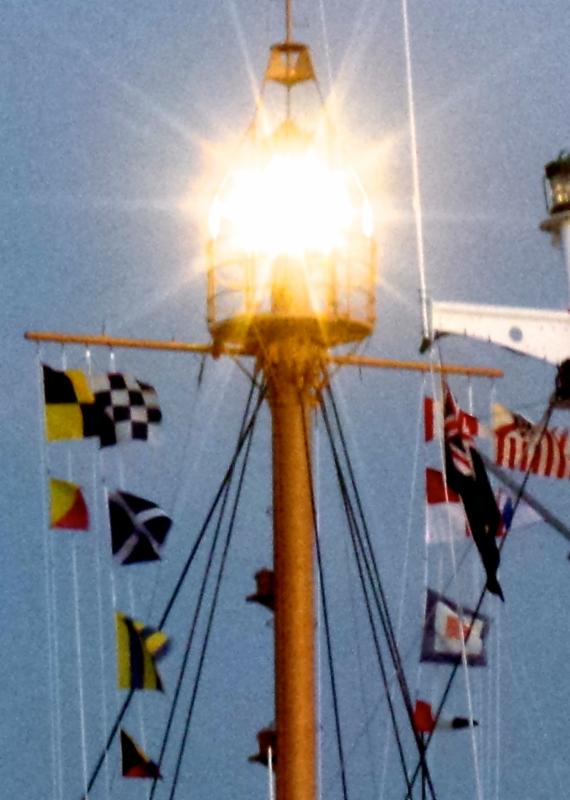 Heritage Day Weekend, August 18-19.
The USLM will commemorate the importance and history of lighthouses by activating
Nantucket/LV-112's rotating, 400,000-candlepower main light beacon and deep-throated foghorn at its homeport berth in Boston Harbor. We'll also offer tours of the 150-foot ship, the largest U.S. lightship ever built.
In 2015
, American Express awarded the U.S. Lightship Museum a $250,000 grant, facilitated through the National Trust for Historic Preservation, which funded this portion of
LV-112's
restoration. This grant has allowed the USLM to participate in National Lighthouse Day as an annual celebration. This will be our fourth year celebrating.
At dusk,
Nantucket/LV-112's powerful rotating main light beacon (23-mile range) and thunderous fog horn (14-mile range) will be reactivated, just like when this historic lightship guided transoceanic vessels past the treacherous Nantucket Shoals and was the first sign of the United States seen by immigrants coming from Europe, earning it the nickname "The Statue of Liberty of the Sea." We invite you to attend this unique waterfront celebration to commemorate National Lighthouse Day, observed by other lighthouses and lightships across the United States.
|
|
|
Nantucket Lightship/LV-112's fog horn, c. 1948.
Photo credit: Tony Gimbale
|
|
|
|
Technician Jamie Zussy of The Lightship Group, LLC, services LV-112's F2T diaphone foghorn components after lying dormant for more than 25 years. The foghorn with all its operating components (diesel engines, compressors, airlines, receivers, manifolds, etc.) were completely dismantled, cleaned and tested. LV-112's foghorn has a 14-mile range and is equipped with dual auxiliary piston manifolds
|
|
|
|
One of two LV-112 dismantled foghorn piston manifolds with piston and compression covers
|
DATE AND TIMES: Saturday, August 18, 5pm-9pm (rain or shine). The grand finale is activating
LV-112's light beacon and majestic, deep-throated foghorn at 8:30pm. The event also will serve as a fundraiser to support the ongoing restoration of
Nantucket Lightship/LV-112. Although National Lighthouse Day is actually August 7, we are celebrating on August 18 to honor this historic day in a way it fully deserves. However, we also will activate
LV-112's main light beacon on Tuesday, August 7, at 8:30pm.
 RESERVATIONS: RESERVATIONS: We request a $25 donation per person. Tickets can be purchased by clicking on
EventBrite. Includes lightship tour. Soft drinks, beer, wine and coffee/tea also are available.
WHERE: Boston Harbor Shipyard & Marina, 256 Marginal St., East Boston, directions. Parking: along Marginal St., East Boston. MBTA: take blue line to Maverick station, approximately a 15-minute walk to ship. Boston Water Taxi: Stop #68,
view map
CONTACT: For more information,
email or call 617.797.0135.
National Lighthouse Day is a day we look forward to celebrating every year with fanfare in Boston Harbor. It honors the beacons of light that for hundreds of years, symbolized safety and security for ships and boats at sea. On August 7, 1789, Congress approved an act for the establishment and support of lighthouse, beacons, buoys and public piers. On this day, we honor all those who put forth efforts and sacrificed their lives to help safely guide ships to and from their ports of call, including members of the U.S. Lighthouse Service and U.S. Coast Guard who served at our nation's lighthouses, lightships, service/support vessels, etc..
Important dates in U.S lighthouse history: click
here
|
Nantucket/LV-112 in international HAM radio event, August 18
|
|
|
HAM radio operators from the USS Cassin Young in Boston communicate via voice and Morse code transmissions with other HAM lighthouse and lightship stations all over the world
|
For the eighth consecutive year, LV-112 will participate in International Lighthouse Heritage Day Weekend, a HAM radio event. On Saturday, August 18, the day we also are celebrating National Lighthouse Day, LV-112 visitors can talk and listen to other HAM radio operators from lighthouses and other lightships from around the world, utilizing LV-112's antennas. We also will be communicating in Morse code. Our radio event will be held during regular Saturday hours for visiting the ship, 10am-4pm. This annual amateur radio event, which started in Scotland in 1993, now has more 450 lighthouses and lightships in more than 50 countries participating each year (list of participants).
The event is always held on the third full weekend in August. It coincides with "International Lighthouse Day" weekend, an event organized by the Association of Lighthouse Keepers in which lighthouses worldwide are open to the public. In addition to promoting amateur radio and international good will, the event promotes awareness of lighthouses and lightships, which are fast becoming endangered species due to GPS, satellite navigation and automation of light sources to solar power. It is hoped the event will heighten awareness of preserving these magnificent structures.
|
Nantucket/LV-112
visitors:
Youth Conservation Corps students and Harborkeepers East Boston
|
|
John Rogers, a
Nantucket/LV-112 volunteer and East Boston school teacher, leads Youth Conservation Corps (YCC) students on tour of the lightship. For more information about the YCC, click
here
|
The Harborkeepers organization recently returned to
Nantucket/LV-112 with students from the Youth Conservation Corps (YCC) for a lesson in local maritime history and how our nation's coastal light beacons helped guide oceanic commerce safely to their ports of call. In addition, they also learned how lightships such as the
Nantucket participated in oceanic/environmental research and served as weather reporting stations. The
Harborkeepers, a nonprofit group of East Boston area volunteers, provides coastal, marine education and advocacy within the East Boston coastline for responsible stewardship of the environment.
The United States Youth Conservation Corps (YCC) is a summer youth employment program that engages young people in meaningful work experiences on national parks, forests, wildlife refuges, and fish hatcheries while developing an ethic of environmental stewardship and civic responsibility. YCC programs are generally 8 to 10 weeks.
|
|
|
Inside LV-112's radio room, John Rogers shows the YCC group an international map indicating lighthouses around the world that LV-112's HAM radio (W1NLS) operators communicated with via Morse code and voice transmissions during an annual international Lighthouse Lightship Weekend (ILLW). This year, LV-112 will be participating in the ILLW event on Saturday, August 18, the day we also are celebrating National Lighthouse Day
|
|
|
|
YCC students in LV-112's officer's quarters lounge, looking at books in the ship's library. These books are left in place from when LV-112 was an active USCG lightship. Some of the books include a set of encyclopedias, novels and reference books, prior to 1975
|
|
|
|
YCC Nantucket/LV-112 visitor, poses with mako shark jaws. Several assorted species of shark jaws were found stashed away in one of LV-112's lower holds in a WWII vintage Navy duffle bag. We cleaned and bleached the moldy jaws. Nantucket Shoals Lightship Station was a shark-infested area. In their off-duty time, some LV-112 crewmembers would fish for sharks, catching upwards of 15 per day, up to 12 feet long. When mako sharks where caught, they usually were prepared and cooked for eating. Those who have eaten mako say it is similar in taste to swordfish. The jaws were cut out and saved for trophies.
|
Boy Scout Troop visits the Nantucket
|
|
|
Boy Scout Troop 8 and their scout masters from South Weymouth, MA, recently were on board LV-112 for a tour and a lesson in maritime history
|
|
East Boston Marine Science & Maritime Festival
|
|
|
Interactive U.S. Lightship Museum block and tackle exhibit, "Work Smarter Not Harder"
|
|
|
A pirate appears on the scene and gives a youngster a lesson in working smarter not harder, the math and physics of block and tackle lifting. Could this be the "Prince of Pirates," Black Sam Bellamy, the wealthiest pirate in history, who traveled back in time on his ship, the Whydah Gally, which was shipwrecked off Cape Cod in 1717?
|
The U.S. Lightship Museum (USLM) recently participated in the East Boston Marine Science & Maritime Festival, organized at Constitution Beach Park in East Boston. The USLM set up an interactive educational block and tackle exhibit titled "Work Smarter Not Harder," a lesson in the practical use of applying math and physics to lifting weighted objects.
The exhibit was a big hit and popular with children. The interactive exhibit allowed visitors to pull equal-weighted dead loads with 1-, 2- and 4-part block and tackle rigging, demonstrating how a weighted dead load is easier to hoist as each of the block and tackle ratios is increased. The block and tackle rigging was generously donated by the Westerbeke Co., East Boston.
|
|
|
A 6-part block and tackle is shown in this 1959 photo behind former Nantucket/LV-112 USCG crewmember, Bob Gubitosi (1939-2014), in one of LV-112's lifeboats. The block and tackles were used for lowering and raising the lightship's lifeboats
|
A block and tackle is characterized by the use of a single continuous rope to transmit a tension force around one or more pulleys to lift or move a load. Its mechanical advantage is the number of parts of the rope that act on the load. The mechanical advantage of a tackle dictates how much easier it is to haul or lift the load. They are common on ships where tasks are performed manually.
|
|
'Incident at Woods Hole Passage'
Excerpt involving Nantucket/LV-112, reprinted from Lightships, Lighthouses & Lifeboat Stations by Bernie Webber
|
|
|
As a U.S. Coast Guard First District lightship based in Boston, Nantucket/LV-112 was converted to a Relief Lightship from 1958-60, in preparation to being taken out of service, refitted and updated. LV-112's original 600 HP vertical-compound-reciprocating steam engine and boilers were removed and replaced with an 8 cylinder 900 HP-Cooper Bessemer Diesel engine, in addition to other modifications to meet 1960 USCG standards. While a Relief Lightship, LV-112 relieved other USCG First District lightships off the New England coast, including Boston, Portland, Pollock, Cross Rip, Stonehorse, Buzzards and Brenton lightship stations
|
 |
|
 |
Channel marker buoys in Woods Hole passage are pulled under the surface during high-velocity tidal currents that go as high as 7 knots
|
Woods Hole is a naturally occurring, rocky, and treacherous passage to navigate, with shallow rocky areas scattered along both sides of the channel. The current is often strong running between Buzzards Bay and Vineyard Sound, mostly flowing around 4 knots and occasionally as fast as 7 knots.
Located about 75 miles south of Boston on the Southwestern Cape, Woods Hole is a geographically unique place. Jutting out of Southwest Falmouth, it is the last part of mainland separating Cape Cod from the Elizabeth Islands. It also separates Nantucket Sound from Buzzard's Bay. This is a notable location for mariners, due to its dangerous channel that has claimed many boats. Boaters heading out of the Cape Cod Canal and into Nantucket Sound need to pass through this channel.
|
|
|
Aerial view of Woods Hole passage
|
 The following excerpt from Bernie Webber's book is his own account and experience of the Woods Hole incident involving Nantucket/LV-112 as a Relief Lightship, en route to the USCG shipyard at Curtis Bay, MD, for a refit and overhaul. Bernie served on Nantucket/LV-112 from 1958-60. The following excerpt from Bernie Webber's book is his own account and experience of the Woods Hole incident involving Nantucket/LV-112 as a Relief Lightship, en route to the USCG shipyard at Curtis Bay, MD, for a refit and overhaul. Bernie served on Nantucket/LV-112 from 1958-60.
Bernie Webber describes the incident
 |
|
 |
Bernard C. Webber (USCG Ret, 1928-2009) was the recipient of the U.S. Coast Guard Gold Life Saving medal and the hero chronicled in the book and movie titled "The Finest Hours." His USCG career also included serving on Nantucket Lightship/LV-112, 1958-60
|
"I was on board LV112/WAL534 for the trip to Curtis Bay, Maryland. During the month of March and part of April the ship relieved the Cross Rip Lightship Station located in Nantucket Sound, Massachusetts, During this time the regular Captain Robert J.W. Collins transferred to other duties. I was in charge until a new captain came on board a few days prior to the ship sailing for Maryland.
"Captain Collins and I had spent the previous two years together sailing old 534 under steam power throughout New England, we had a great rapport and I was sorry to see him leave at this particular time as he was missing the last voyage with the lightship under steam power.
|
|
|
Rare 1956 color photo of Nantucket/LV-112 prior to the refit in 1960. During the refit, LV-112's original tall smoke stack was modified and replaced with a shorter and wider stack to accommodate an increased number of auxiliary engine exhausts to operate electric generators and air compressors. Photo credit: Dick Mack
|
"With the new captain on board it was not the same for me as we departed from Cross Rip Station heading for Maryland. I felt a distance between the new captain and myself; I was protective of the lightship and knew her so well. The new captain seemed a devil-may-care attitude. I must admit I felt some resentment towards him as he was a stranger to me and now in charge.
|
|
|
Nantucket/LV-112's original vertical-reciprocating compound steam engine powered LV-112 from 1936-60. The steam engine was powered by Babcock & Wilcox oil fired boilers. Photo credit (both photos): Hagley Digital Archives
|
|
|
|
Top section of LV-112's steam engine. In his book, Bernie Webber reminisces on how "for relaxation, some of the crew would take a sauna bath up forward in the lightship boiler room where the air rising from the oil-fired steam plant was hot and dry. We would lie down on the upper steel deck gratings with towels underneath, the intense heat made it easy to work up a sweat"
|
"Departing Cross Rip Station, the lightship proceeded along Nantucket Sound, our first stop was to heave to (stop) off Nobska Point Lighthouse in Vineyard Sound just off the entrance to Little Harbor at Woods Hole. Electronic equipment and other items were off-loaded into a Coast Guard boat from the base at Woods Hole because the lightship's draft of 16 feet (depth) in the water was too great to enter the harbor.
"Offloading completed, the captain took 'the con' (control the navigation of the ship) and lightship 534 was once again underway, supposedly on a heading down Vineyard Sound. Much to my surprise when the ship was abeam of the entrance buoys leading into Great Harbor, Woods Hole, the captain gave the order to the helmsman 'right full rudder, steady up in the center of the channel.'
I spoke up immediately questioning the captain as to what is going on, unaware of any orders or plan to enter the Great Harbor at Woods Hole.
"The captain in an off-hand reply simply stated, 'Chief, it's near high water and I'm taking a short cut through Woods Hole Passage into Passage into Buzzards Bay, it'll save us time.'
|
|
|
Helmsman on LV-112's flying bridge, 1959. Photo credit: Bob Gubitosi
|
"Stunned by his action, I responded 'Save some time, captain, you'll sink the god-dammed ship! There's not enough water in the passage to get through, the ship is drawing over sixteen feet and there's only twelve to fourteen feet in some places, you'll rip the bottom out!' The captain gave me a disapproving look, ignored my warning and ordered the helmsman to make 'a hard left rudder' at the Grassy Island turn, adding, 'steady up in the channel head for Middle Ledge.'
"There was little I could do other than take over control of the ship from the captain and I thought about it, but at that moment Lightship 534 hit bottom, bounced off a ledge, then hit again laying over on its starboard (right) side a few degrees and continued to drag along the ledge below. At that, moment I thought 'this was the end for the Queen of all the lightships.'
"The Captain was not a bit fazed and just looked straight ahead. Luckily, the lightship kept moving, making it over the ledges into deeper and safer waters. It is a miracle the ship was not holed and apparently was none the worse because of the incident. Many years have passed and I have continued to wonder if there is at least a fair dent in the bottom of the grand old vessel."
Mystery solved!
|
|
|
Nantucket/LV-112 in drydock at Fitzgerald's Shipyard, Chelsea, MA, 2012. After 20 years since its last dry-docking, eight tons of marine growth had just been removed from the hull below the waterline when marine surveyor Charles Deroko (NAMS-CMS) from Brooklyn, NY, performed an audio-gauge survey of the ship's shell plating. Unaware of the Woods Hole grounding, when Deroko inspected LV-112's hull, he noticed a portion of one of the bilge keels (one of two stabilizing keels on the lower portion of the hull) was damaged and appeared to have hit something at one time
|
 |
|
 |
See bent portion of LV-112's bilge keel near center of photo through silver-colored scaffolding
|
After reading Bernie Webber's account of his experience going through Woods Hole passage with LV-112 in his book, we had our answer, solving the mystery. Doing more archival research on LV-112's service in the USCG and operating as a museum ship prior to USLM ownership, we could not locate any records of repaired damage to LV-112's bilge keel after the grounding. Therefore, we are speculating it was determined that the damage was not serious enough to justify expending the money and resources to conduct an expensive repair.
|
Haircut Day...
|
|
In the last issue of eNews, we ran this photo titled "Haircut Day" of Bernie Webber (center) giving haircuts on LV-112.
Richard Perryman, who appears on the right, wrote to us and explained what is actually going on in the photo. He said, "James Sandlin (left) and I made a bet that if one of us was to shave our hair off, the other would. It wasn't a 'haircut day' for the whole crew, just Sandlin and I. Chief Webber did the honors.
In other words, Chief Webber wasn't the [regular] barber."
In photo below, Robert Arbuthnot is giving Peter Bombard a trim on board LV-112. Both men served on Nantucket/LV-112 from 1973-75 and served on Nantucket 612 in 1975. Photo credit: USCG Lightship Sailors Association
|
|
|
Become a USLM member today
|
|
|
For a gift of $1,000 or more, donors will receive a limited-edition, fine-art print of the SS United States passing Nantucket/LV-112, signed by marine artist Gerald Levey
|
Discover the value-added membership benefits when you become a member of the U.S. Lightship Museum (USLM). The USLM is a member of the Council of American Maritime Museums (CAMM). All USLM members will be granted reciprocal privileges (free admission) at participating CAMM institutions. For more information about the benefits and the USLM Membership program, click on USLM Membership.
All electronic donations will be processed by PayPal.
We thank everyone for their ongoing
contributions
and support
|
|
| |
| |
|
|